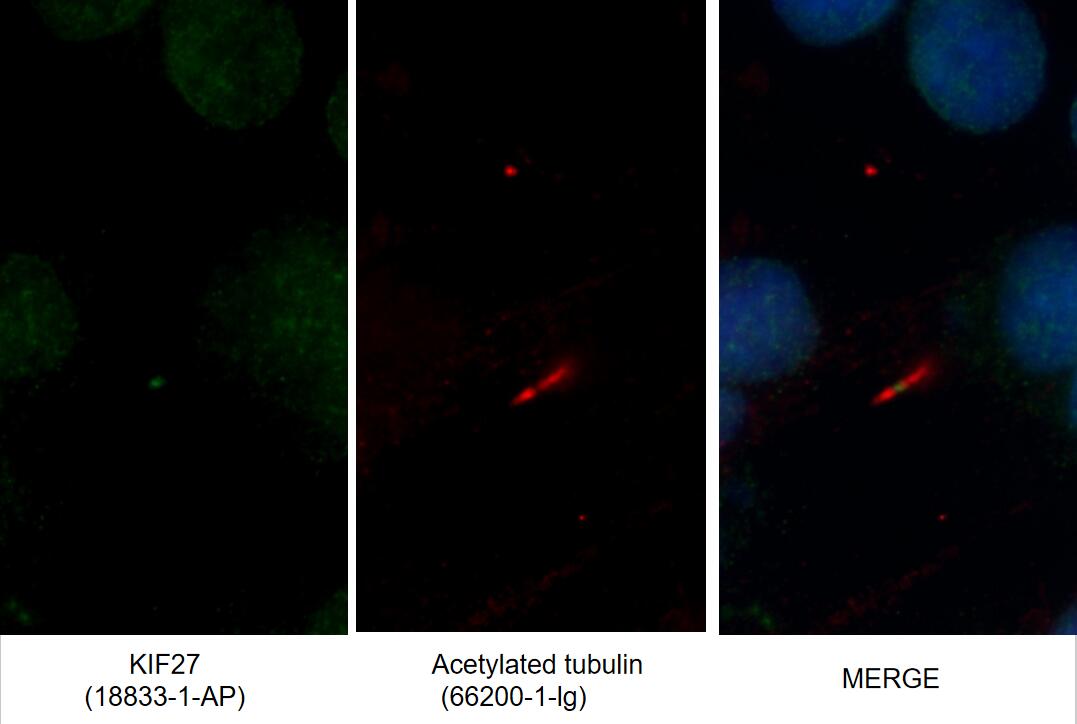Anticorps Polyclonal de lapin anti-KIF27
KIF27 Polyclonal Antibody for IF/ICC, ELISA
Hôte / Isotype
Lapin / IgG
Réactivité testée
canin, Humain
Applications
IF/ICC, ELISA
Conjugaison
Non conjugué
N° de cat : 18833-1-AP
Synonymes
Galerie de données de validation
Applications testées
| Résultats positifs en IF/ICC | cellules MDCK |
Dilution recommandée
| Application | Dilution |
|---|---|
| Immunofluorescence (IF)/ICC | IF/ICC : 1:20-1:200 |
| It is recommended that this reagent should be titrated in each testing system to obtain optimal results. | |
| Sample-dependent, check data in validation data gallery | |
Informations sur le produit
18833-1-AP cible KIF27 dans les applications de IF/ICC, ELISA et montre une réactivité avec des échantillons canin, Humain
| Réactivité | canin, Humain |
| Hôte / Isotype | Lapin / IgG |
| Clonalité | Polyclonal |
| Type | Anticorps |
| Immunogène | Peptide |
| Nom complet | kinesin family member 27 |
| Masse moléculaire calculée | 160 kDa |
| Numéro d’acquisition GenBank | BC140788 |
| Symbole du gène | KIF27 |
| Identification du gène (NCBI) | 55582 |
| Conjugaison | Non conjugué |
| Forme | Liquide |
| Méthode de purification | Purification par affinité contre l'antigène |
| Tampon de stockage | PBS with 0.02% sodium azide and 50% glycerol |
| Conditions de stockage | Stocker à -20°C. Stable pendant un an après l'expédition. L'aliquotage n'est pas nécessaire pour le stockage à -20oC Les 20ul contiennent 0,1% de BSA. |
Informations générales
KIF27 belongs to the kinesin-like protein family and it is a kinesin-4 motor with key roles in cytoskeletal function and ciliogenesis. KIF27 has a conserved function in microtubule organization which can influence microtubule dynamics. KIF27 is highly expressed in ciliated cells, such as olfactory sensory neurons, suggesting to be indispensable in the development and function of motile cilia. Unlike other family members, KIF27 is a slow motor due to its low phosphatase activity. (PMID: 29351996, 29450149, 21746835)
Protocole
| Product Specific Protocols | |
|---|---|
| IF protocol for KIF27 antibody 18833-1-AP | Download protocol |
| Standard Protocols | |
|---|---|
| Click here to view our Standard Protocols |


